This article is meant to help you if your puppy or dog pees next to the pee pad instead of right on the pad.
Note that I am generally not a fan of any type of indoor dog pee pads, “potty pads” or fake grass for dogs.
But I realize sometimes they are the best option for certain situations and millions of dog owners use these products.
The reason I don’t like using indoor dog pee pads is some dogs will pee next to the pads instead of on the pads!
Help! My dog pees next to the pee pad
So this article will give dog owners some ideas on what you can do to get your dog to pee on the pad instead of around the pad!
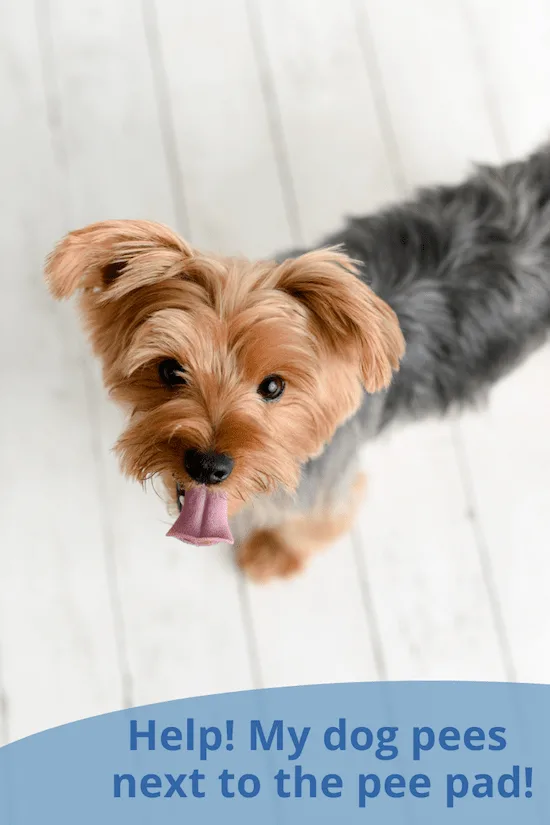
How do I train my dog to pee on the pee pads instead of next to the pad?
First things first. Ask yourself, does your dog really need the pee pads? Is it really necessary to have an indoor potty area for your dog?
In most cases, it is not necessary. You can skip the indoor potty stage and immediately train your puppy or dog to go potty outside. See my post on puppy potty training basics. Problem solved.
But if the pads truly are the best option, here are my ideas to help you and your puppy.
*Enjoying this article? Get realistic dog training tips emailed once a week. Click Here
1. Go back to the puppy potty training basics.
If your dog is currently peeing right on the edge of the pee pad, next to the pad or in other areas of the house, go back to the basics as though he is not trained.
Dogs need to be trained to pee on a pee pad. They do not automatically know what to do. The #1 mistake dog owners make is assuming their dogs know what to do too soon.
If your dog is peeing next to the pad it’s because she doesn’t understand where she is supposed to go. She’s not doing so because of an attitude or for attention.
Training a dog or puppy to pee on the pads is not much different than training a dog to go potty outside. But it does take a couple of weeks or months for them to catch on.
See these posts for more information:
Potty training basics for using dog pee pads:
The most common pee pad potty training mistake is giving the dog too much freedom too quickly and assuming he “knows” what to do.
- Take your dog to the correct spot (in this case, to the pee pads) and reward him for peeing right on the pads. You may need to have your dog on a leash.
- Take him there often, like every 45 minutes at first.
- Prevent him from going potty elsewhere in the house by keeping him leashed and near you at all times or in a kennel/crate when you can’t supervise. This is only temporary!
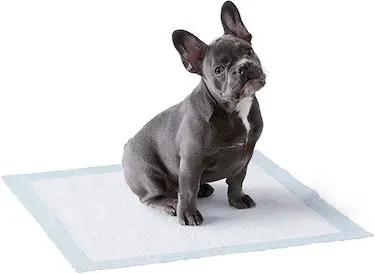
2. Make sure the puppy potty pad is always in the same place.
A tip for potty training a puppy is to always take her outside to the exact same spot. This is also what you should do for indoor potty training with a pee pad.
The pee pad should always be in the exact same spot in the same corner of the same room. Every time.
Also, if you rearranged the room where the pee pad is kept, that could be confusing to your dog so don’t rearrange until you’re sure she’s 100 percent pee pad trained.
3. Reward your dog for peeing in the middle of the pee pad.
When you’re first training your dog to use the pads, keep him on a leash and help guide him to the middle of the pee pad. Reward him with a treat immediately when he pees directly on the pad.
When he’s on a leash, you can also prevent him from peeing on the edge of the pad or right next to the pad. Guide him to the correct spot and reward.
For more down-to-earth dog training tips, join That Mutt’s newsletter community. Click Here.
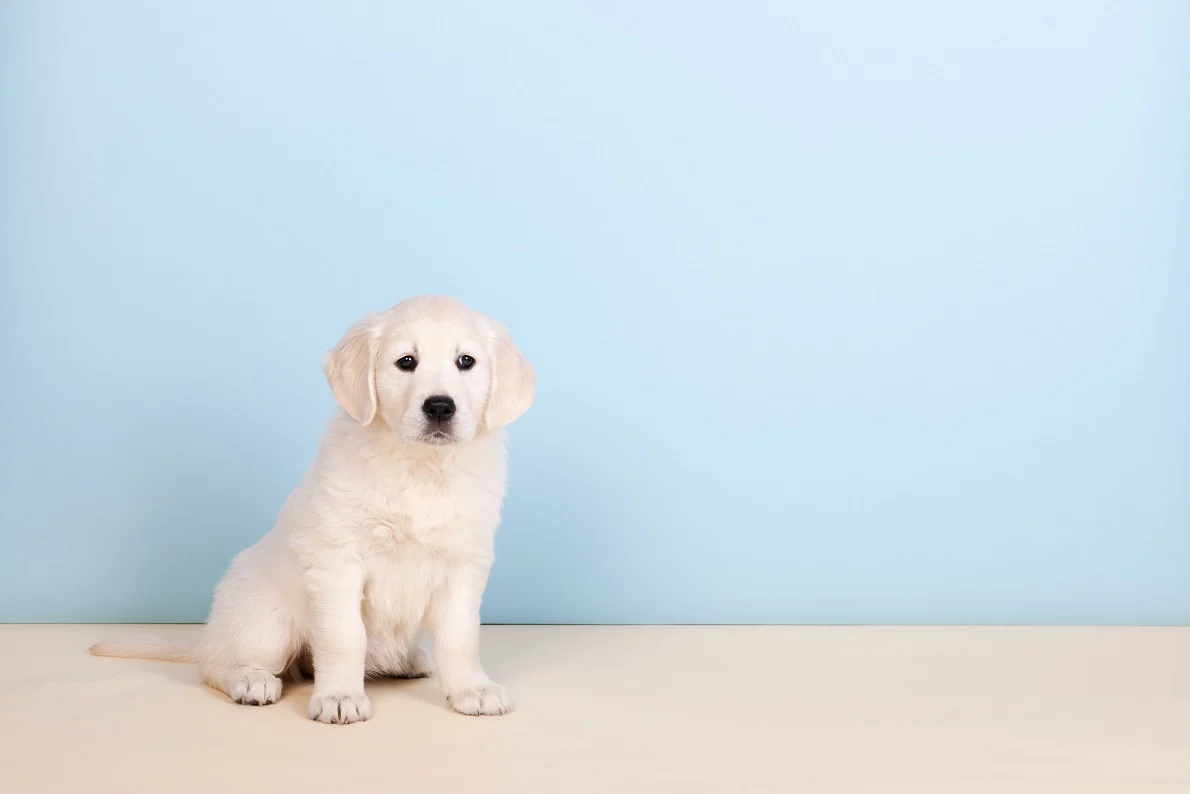
4. No need to use more than 2-3 pee pads at once.
Some trainers recommend you cover a huge area with the pads at first, like a whole small room. This is not necessary because you should physically be bringing your dog over to the pads to show him where to go. You’re not leaving it up to chance.
You could place 2 or 3 pads down together so the area is a little larger, but no more than that. You don’t want your dog to get the idea that he can pee anywhere in that room, just a small area where the pee pads are.
5. Use a litter box or a pad holder for the pee pads.
If you’re simply placing the pee pad on the ground, try using a pad holder or even a pee pan, which is like a litter box without litter to put the pad in.
This makes it easier for the dog to differentiate between the floor and the pad area. This also prevents the pad from sliding around, and it gives your floor a little extra protection.
Some dogs might not like it when the pads slide around, so the pad holder will also help with that.
6. Put a clean pee pad down more often.
A lot of dogs don’t like to step where they’ve previously peed, so you can help encourage your dog to keep using the pads by changing them often enough.
On the other hand, sometimes a little urine on the pad can help remind the dog where to go.
*Enjoying this article? Get realistic dog training tips emailed once a week. Click Here
What to do if my dog stopped using pee pads
If your dog was previously trained to go potty on pee pads but now your dog pees next to the pee pad, ask yourself what has changed?
Have you recently moved to a new home or apartment? Your dog might be confused on where to go. Have you rearranged the room recently or moved where you put the pads?
Other life changes could cause your dog to feel nervous as well such as a new pet in the family, a lot of visitors or a new baby.
Regardless, if your dog starts peeing around the pads or seems to be missing the pads on purpose, I would go back to the basics outlined above.
Hopefully you will only need about 3 weeks of consistency for your dog to understand what to do.
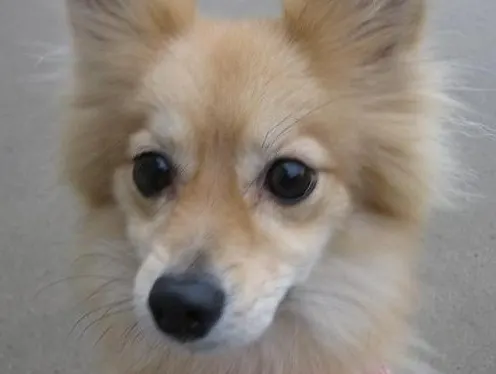
Why is my dog peeing next to the pee pad or on the edge of the pad?
If your dog pees next to the pee pad, it could be for a variety of reason such as:
- Confusion on where she’s supposed to go (go back to basics)
- The puppy is not fully potty trained yet
- You’re expecting too much from your puppy too quickly
- Your dog is getting a bit lazy (go back to basics again)
- Possibility of a UTI or upset tummy
My dog won’t poop on the pad anymore
I haven’t addressed this issue yet in this article, but it’s really the same concept. If your dog is peeing on the pad but not pooping on the pad, you may need to go back to some basic training.
Take your dog to the correct spot every time and reward with a treat immediately.
Now, keep in mind that a lot of dogs like to poop during a walk. It just helps to “get things moving” if you know what I mean.
So, even if you prefer that your small dog poops on indoor pads, I highly recommend you plan a consistent walk in your schedule every day.
Do this shortly after meals and try to stick to the same routine every day.
This will help your dog learn to poop “on a schedule” and gives him an opportunity to do so outside if he prefers. I think this is a fair compromise.
We should all be walking our dogs at least once a day anyway, regardless of if we use pee pads for them or not.
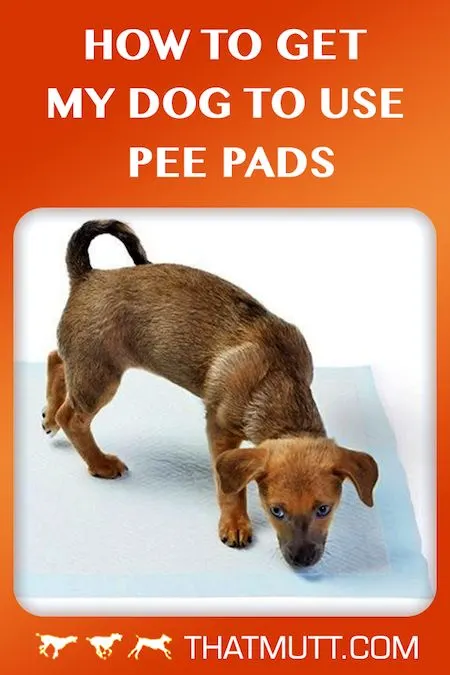
Are puppy pads good or bad?
As I said in the beginning of this article, I am personally not a big fan of training puppies or small dogs to go potty on pee pads. For the most part, they’re unnecessary and they seem to cause a lot of potty training problems for a lot of dogs.
However, of course I understand puppy pee pads are very popular and many, many dog owners use them! I would ask yourself if you truly need them for your situation and go from there.
If you’re able to stop using them and take your dog outside for all her potty breaks, that would be ideal. If you want to use them for your pup, that is entirely up to you.
How long should you use puppy pads?
There are always exceptions and you know your own situation best, but I would avoid using puppy pee pads all together if you can and take your puppy directly outside.
Especially if you have a large dog, this just makes the most sense. Start training your puppy to go potty outside immediately.
Now, if you choose to use the pads for whatever reason, I would recommend you use them for as short of a period as possible, just a few weeks or a couple of months.
And yet, others choose to use the pads throughout their small dog’s life. Perhaps the person works long hours and the small dog needs an indoor potty area.
Or perhaps they live in the 25th floor or it’s just not safe to be out at night. Again, you know your situation best.
Now … how about the rest of you?
What tips do you have if a dog pees next to the pee pad instead of on the pad?
Am I missing something? How did you train your dog to stop peeing around the pee pad?
Let me know in the comments!
*Enjoying this article? Get realistic dog training tips emailed once a week. Click Here
Products for your puppy or dog:
- Pee pad holder
A pee pad holder keeps the pad in one place and sets up a more obvious “boundary” around the pad to make it more obvious where to go. - High value treats
Reward your puppy with a treat the second she goes potty on the pee pad, not after. I recommend Zuke’s minis. - Crate or kennel
Crate your puppy for short periods when you can’t supervise her. This will reinforce calm behavior and prevent potty accidents. - The Farmer’s Dog
Feed your dog a fresh, healthy food such as The Farmer’s Dog. Get 50% off your first order.
Other resources:
- Why Is My Dog Peeing on the Bed?
- My Dog Won’t Outside When It’s Raining
- Can I walk my puppy before she’s had her shots?
- How to stop my puppy from peeing in her kennel
- Reasons to use fake indoor grass for dogs
- Will my puppy be able to hold it while I’m at work?
Get all of our puppy training tips HERE.
Lindsay Stordahl is the founder of That Mutt. She writes about dog training, dog exercise and feeding a healthy raw diet.

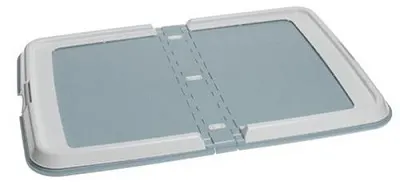
Sharon Mediger
Saturday 22nd of April 2023
I have a 4 pound Morkie and live in South Dakota. Winters in SD are not very conducive to a small dog. Not only is the snow taller than she but her tiny feet get cold very fast. Potty pads help to reduce the suffering of cold SD winters in small/ tiny dogs.
Linda straton
Tuesday 9th of August 2022
My little chihuahua peeing on the pad in am but rest of the day I take her out, but sometimes she goes off and goes on the pads, but sometimes she’ll pee right I fro t of us , like I’m not going on the pad. I think she gets it , but it’s frustrating. She only 5 months old . I guess I should go back to starting all over right? Help very frustrated Chihuahua mama here
Lindsay Stordahl
Wednesday 10th of August 2022
She is still young and probably doesn't 100% understand where you want her to go. Keep being consistent and taking her to the pad to go potty and rewarding with a treat. When she pees right in front of you, it's not out of spite, it's because she just doesn't understand. She is still a puppy. Hang in there!
Helena Sills
Monday 24th of January 2022
Should you have more than one erea with a pee pads eg by back door plus in a play erea??
Lindsay Stordahl
Tuesday 25th of January 2022
It's up to you but simplicity is usually best. Make sure they're going on the original spot 100 percent with no confusion before you add more.
Gina D.
Monday 20th of December 2021
I have 7 month old Shih-Tzu, He is Potty trained to the pad no problem, but the need to re-train him to the Potty Pan is because: He pees on the pad, then goes back to lick his pee on the pad, then he goes back and eats the training pad spot where he peed, he also lays on the pad where he peed...now he smells like pee. Really! I have to keep bathing him. Pee Pads are expensive. This is why I need the Potty Pan with the cover. This way he can't lick the pad once he uses it, Can't eat the used pads, doesn't smell like pee and I use less pee pads. But, when trying to train him to use the Pee Pan, he pees next to the Pan...He will not use the Pan. Chase is rocking my world. HELP!
Lindsay Stordahl
Monday 20th of December 2021
I'm not familiar with the Potty Pan, but do you put pads in it, at least for now, to help him transition?
Ruby Pleasure
Monday 26th of October 2020
Our chihuahua/frenchie mix (6+yrs about 15-ish pounds) recently (last work or two) begun to pee on the edge of her pad and pee gets on the floor underneath. The center of the pad is untouched. She was very good about this beforehand. It almost is like it is done on purpose. She only does this late night/early morning while we are sleeping. We take her out just before we go to bed and first thing in the morning. We live in an area where there are mountain lions and coyotes and we have been cautioned not to leave our animals and children unattended. I tried to place towels underneath the pads last evening and she peeled on the edge around the pad! I have been cleaning with a solution of pinesol. Is there some sort of cleaner/spray that will discourage this behavior? Thanks for your suggestions.